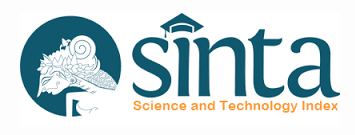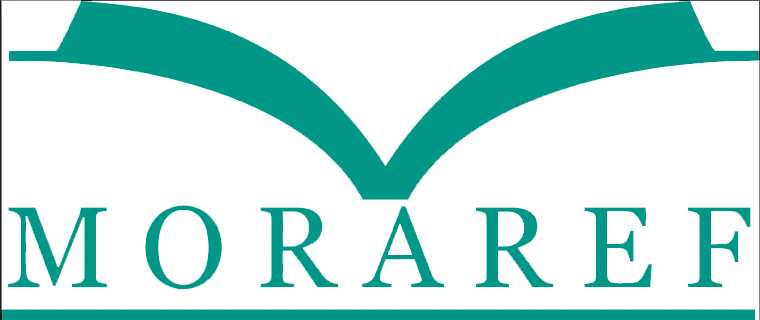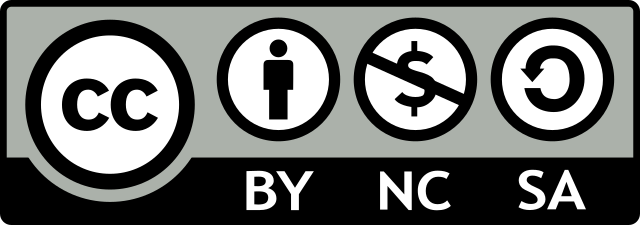INFORMATION SEEKING BEHAVIOR OF COASTAL SOCIETY IN SOUTHEAST SULAWESI
Abstract
The goal of this study was to discover the information-seeking behaviour of coastal communities in Southeast Sulawesi, which has the second highest marine catch (fish) income in Indonesia, despite the fact that the majority of its territory is made up of oceans, but the people's income is still low and less prosperous, as evidenced by the export value of marine catches still falling under East Java, Jakarta, and South Sulawesi. The data for this study were collected from 105 respondents who used a quantitative technique to fill out a list of information seeking behaviour, while 10 respondents used a qualitative approach, namely in-depth interviews about the hurdles experienced when seeking information. According to the findings of this study, the information seeking behaviour of coastal populations in Southeast Sulawesi is still manual, that is, they still use experiences and feelings by 45.8% of the time, and the barriers they confront in obtaining information are related to technology by 29.1% of the time. The outcomes of the study are directly related to the income obtained by the coastal villages of Southeast Sulawesi, which is still poor and less prosperous
Downloads
References
Ansaar. (2019). Shipping And Fish Catching Knowledge System Of The Fishermen Community In The Village Of Rangas, Majene Regency. WALASUJI, 10(2), 139–154.
Central Bureau of Statistics. (2020a). Gross Regional Domestic Product of Provinces in Indonesia by Industry.
Central Bureau of Statistics. (2020b). Marine and Coastal Resources Statistics. In Central Bureau of Statistics.
Central Bureau of Statistics. 2020. National Socioeconomic Survey (SUSENAS) March 2020, Jakata: Central Statistics Agency
Belkin, N. (1978). Information Concepts for Information Science. Journal of Documentation, 34, 55–85. https://www.semanticcholar.org/paper/Information-Concepts-for-Information-Science-Belkin/0b66dd85166a7a73215a9c48040f8e80754ddcc1
Byström, K., & Järvelin, K. (1995). Task complexity affects information seeking and use. Information Processing & Management, 31(2), 191–213. https://doi.org/10.1016/0306-4573(95)80035-R
Case, DO (2002). Looking for Information: A Survey of Research on Information Seeking, Needs, and Behavior. Academic Press. https://doi.org/10.1108/01435121311310941
Case, DO (2007). Looking for Information: A Survey of Research on Information Seeking, Needs, and Behavior (2nd Ed).
Choo, CW (1998). The Knowing Organization: How Organizations Use Information to Construct Meaning, Create Knowledge, and Make Decisions. Oxford UniversityPress. https://doi.org/10.1093/ACPROF:OSO/9780195176780.001.0001
Dervin, B. (1983). Information as a user construct: The relevance of perceived information needs to be synthesized and interpreted. In SA Ward & LJ Reed (Eds.), Knowledge structure and use: Implications for synthesis and interpretation (pp. 153-184). Philadelphia, PA: Temple University Press.
Dervin, B. (1983). More will be less unless: The scientific humanization of information systems. National Forum, 63(3), 25-27
Ellis, D. (1993). Modeling The Information-Seeking Patterns Of Academic Researchers: A Grounded Theory Approach. Library Quarterly, 6(3), 469–486.
Ellis, D., & Haugan, M. (1997). Modeling the information seeking patterns of engineers and research scientists in an industrial environment. Journal of Documentation, 53(4), 384–403. https://doi.org/10.1108/EUM0000000007204
Food and Agriculture Organization of the United Nations. (2018). Impacts of climate change on fisheries and aquaculture: Synthesis of current knowledge, adaptation and mitigation options. In Impacts of climate change on fishers and aquaculture. http://www.fao.org/3/i9705en/i9705en.pdf
Foster, A. (2004). A Nonlinear Model of Information-Seeking Behavior. Journal of the American Society for Information Science and Technology, 55(3), 228–237. https://doi.org/https://doi.org/10.1002/asi.10359
Freund, L. (2015). Contextualizing the information-seeking behavior of software engineers. Journal of the Association for Information Science and Technology, 66(8), 1594–1605. https://doi.org/10.1002/ASI.23278
Godbold, N. (2006). Beyond information seeking: Towards a general model of information behavior. Information Research, 11(4). https://www.researchgate.net/publication/26459085_Beyond_information_seeking_a_general_model_of_information_behaviour
Järvelin, K., & Wilson, T. (2003). On Conceptual Models for Information Seeking and Retrieval Research. Information Research, 9(1). https://www.researchgate.net/publication/220468732_On_Conceptual_Models_for_Information_Seeking_and_Retrieval_Research
Johnson, JD (1997). Cancer-related information seeking. Hampton Press.
KKP. 2020. Map of the Republic of Indonesia's Fisheries Management Area. Jakarta: Ministry of Maritime Affairs and Fisheries.
Koja-Odongo, R., & Mostert, R. (2006). Information seeking behavior: a conceptual framework. South African Journal of Libraries and Information Science, 72(3), 145–158. https://doi.org/10.7553/72-3-1112
Kriklas, J. (1983). Information-Seeking Behavior: Patterns and Concepts. Drexel Library Quarterly, 19(2), 5–20. https://eric.ed.gov/?id=EJ298483
Kuhlthau, Carol C. (1991). Inside the search process: Information seeking from the user's perspective. Journal of the American Society for Information Science, 42, 361–371. https://asistdl.onlinelibrary.wiley.com/doi/epdf/10.1002/%28SICI%291097-4571%28199106%2942%3A5%3C361%3A%3AAID-ASI6%3E3.0.CO%3B2-%23
Kuhlthau, Carol C. (1993a). A Principle of Uncertainty for Information Seeking. Journal of Documentation, 49(4), 339–355. https://eric.ed.gov/?id=EJ478004
Kuhlthau, Carol C. (1993b). Seeking Meaning: A Process Approach to Library and Information Services. Ablex. https://www.journals.uchicago.edu/doi/epdf/10.1086/602736
Kuhlthau, CC (1997). The influence of uncertainty on the information seeking behavior of a securities analyst. In P. Vakkari, R. Savolainen, & B. Dervin (Eds.), Information seeking in context: Proceedings of a meeting in Finland 14-16 August 1996. Taylor Graham, London.
Kuhlthau, Carol Collier. (2004). Seeking meaning : a process approach to library and information services (2nd Ed). Libraries Unlimited.
Kuhlthau, CC (2004b). Student learning in the library: What library power librarians say. In MK Chelton & C. Cool (Eds.), Youth information-seeking behavior: Theories, models and issues (pp. 37-64). Lanham, MD: Scarecrow Press.
Kwanya, T. Information seeking behavior in digital library contexts (pp. 1–25). IGI Global. https://doi.org/10.4018/978-1-5225-0296-8.CH001
Leckie, GJ, Pettigrew, KE, & Sylvain, C. (1996). Modeling the Information Seeking of Professionals: A General Model Derived from Research on Engineers, Health Care Professionals, and Lawyers. Library Quarterly, 66, 161–193. https://doi.org/10.1086/602864
Robson, A., & Robinson, L. (2013). Building on models of information behavior: Linking information seeking and communication. Journal of Documentation, 69(2), 169–193. https://doi.org/10.1108/00220411311300039
Savolainen, R. (1995). Everyday life information seeking: Approaching information seeking in the context of “way of life.” Library & Information Science Research, 17(3), 259–294. https://doi.org/10.1016/0740-8188(95)90048-9
Shenton, AK, & Hay-Gibson, NV (2011). Modeling the information-seeking behavior of children and young people: Inspiration from beyond LIS. Aslib Proceedings: New Information Perspectives, 63(1), 57–75. https://doi.org/10.1108/00012531111103786
Spink, A., & Cole, C. (2005). New Directions in Cognitive Information Retrieval. Springer. https://doi.org/10.1007/1-4020-4014-8
Taylor, RS (1968). Question-Negotiation and Information Seeking in Libraries. College & Research Libraries, 29(3), 178–194. https://doi.org/10.5860/crl_29_03_178
Williamson, K. (1998). Discovered by chance: The role of incidental information acquisition in an ecological model of information use. Library & Information Science Research, 20(1), 23–40. https://doi.org/10.1016/S0740-8188(98)90004-4
Wilson, TD (1999). Models in information behavior research. Journal of Documentation .doi/10.1108/EUM0000000007145/full/html.
Wilson, TD (2000). Human information behavior. Informing Science, 3(2), 49–55. https://doi.org/10.28945/576
Yusuf, et al. (2016). Demographics, Socio-Economic and Cognitive Skills as Barriers to Information Seeking in a Digital Library Environment. In Tella, Adeyinka. Information Seeking Behavior and Challenges in Digital Libraries (pp. 179-202).
Copyright (c) 2024 Cecep Ibrahim

This work is licensed under a Creative Commons Attribution-NonCommercial-ShareAlike 4.0 International License.
By submitting your manuscript to our journal, you are following Copyright and License








